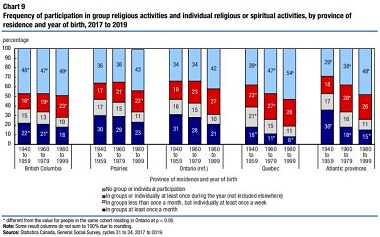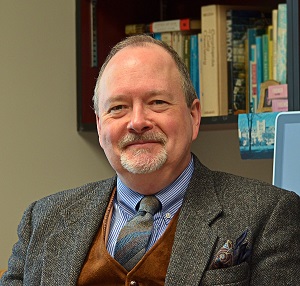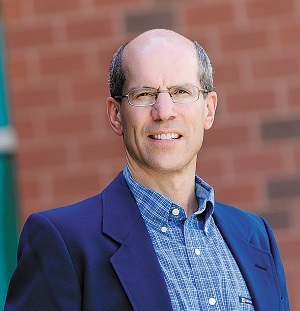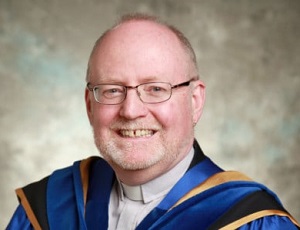 Veteran journalist John Longhurst relied on his connections with several leading Christian thinkers to elicit some valuable commentary on the state of religion in Canada.
Veteran journalist John Longhurst relied on his connections with several leading Christian thinkers to elicit some valuable commentary on the state of religion in Canada.
Following is his ‘Stats on religion in Canada not surprising for scholars,’ posted on his On Faith Canada blog November 13 and posted here by permission.
When I asked my scholar’s brain trust for response to the recent Statistics Canada survey of religion – for use in my Free Press column on that topic – like usual, I got way more good stuff than I could use in the newspaper.
So I’ve published their responses below verbatim for you to read, to learn more about their take on the findings. In a few cases, I went back to some for follow up questions. Those responses are included as addendums.
For me, having a chance to consult these scholars is like a master class in Canadian religiosity. I hope you find it helpful, too.
John Stackhouse, Crandall University
 No big surprises to anyone on this list, I’m pretty sure!
No big surprises to anyone on this list, I’m pretty sure!
Not much comfort to be found for religious groups in immigration, since it remains to be seen whether the 2nd and 3rd generations will go the way of all (Canadian) flesh and give up traditional religion for hockey+NETFLIX+snacks+whatever.
No surprise to those of us out here in Atlantic Canada [he spent many years at Regent College] that religiosity of any sort is apparently lower among young people. I teach many of those young people and their knowledge and practice of Christianity or of other religions is, um, low.
The one data set I find bemusing is the self-reporting of how “important” religious belief, identity, etc., is to people. “Important” or “Very Important,” say way more people than actually show up in church, mosque, gurdwara, etc. or in any other way demonstrate religious or spiritual commitment. The old problem of self-reporting is quite stark here again: You say that religion/spirituality/whatever is important, but how would you prove that it is?
I think of the Thiessen-Bibby debate in particular as to whether the problem of low religiosity is a “supply” problem – churches, etc., aren’t doing what they ought to do (Bibby) – or a “demand” problem – those currently not interested in churches, etc., won’t become interested no matter what those institutions do (Thiessen).
Okay, so maybe lots of people are hypocrites, or sentimentalists, or delusional or whatever. It remains interesting to try to understand why so many Canadians profess to take seriously what most of them manifestly do not take seriously.
Is this simply a kind of cultural residuum, a mark of ethnicity seen in secular Quebecers staunchly defending the cross in the National Assembly? Or is there a lingering sense that identifying wholly with atheism/secularism (which precious few Canadians do) is a bridge too far, a kind of closing the door on Something or Someone that one ought not to entirely shut out?
Addendum: I think Thiessen’s findings are an important advance over Bibby’s. It’s a case of “asking the second question” that Bibby’s polls aren’t set up to do. “Yes, but if the churches did in fact do things differently, would you go then?”
Still, since so few Canadian churches show evidence that they offer what I would say is the “core offerings” of a church – a powerful encounter with the divine plus a strong supportive group – but instead offer mostly a Sunday morning show plus weekday opt-in services, it may be that Bibby is right. And Thiessen’s subjects literally don’t know what they’re missing.
Sarah Wilkins-Laflamme, University of Waterloo
 Yes, I echo a lot in John Stackhouse’s email on this: no big surprises in these trends. In fact, we discussed many of these trends during our April Zoom chat earlier this year.
Yes, I echo a lot in John Stackhouse’s email on this: no big surprises in these trends. In fact, we discussed many of these trends during our April Zoom chat earlier this year.
As for the proportion of Canadians saying their religious and/or spiritual beliefs are important in their lives, without attending religious services regularly, this isn’t that surprising to me.
Religious and spiritual beliefs across Western societies tend to decline more slowly than activities with organized religious groups.
A significant proportion of adults across Canada (in all regions) prefer to have their own set of beliefs that they consider as religious or spiritual, in some cases coming from religious traditions and in some cases not, and without having to grapple with the external authority of religious leaders and involvement with religious groups.
Similar to Luckmann’s concept of ‘invisible religion’ or to what a number of researchers refer to as self-spirituality, many individuals keep beliefs that they feel best reflect their ‘authentic’ selves (in Taylor’s age of individual authenticity), without the perceived baggage of organized religion.
This said, this measure of the salience of religious or spiritual beliefs in life is also on the decline in Canada, and is found among a smaller proportion of Gen X and Millennials than among older generations.
Addendum: You find all sorts across a population – people who attend religious services regularly for family reasons, but don’t believe; people who are both religious and spiritual; people who are not religious nor spiritual; SBNR [spiritual but not religious]; etc.
But a common form of religious decline is an initial move away from organized religion (stop regular activities with a religious group) while still maintaining some religious beliefs and occasional practice for holidays and rites of passage. This is the move that many among the Boomer generation made in Canada over the past half century.
But religious beliefs are more difficult to pass on to the next generation with no institutional and community support in religious socialization, and so we then begin to see declines in religious and spiritual belief, and in the salience of beliefs among younger generations.
Charles Taylor’s massive subjective turn in an age of authenticity argument, along with literature on growing self-spirituality, see many individuals no longer feeling the need for religious groups to support their own belief system.
External sources of authority, such as relying on religious leaders or an external God to inform what individuals should believe and do, is not something that’s valued in our individualized societies as much any more.
Instead, individuals prefer to be their own arbitrators of their belief system, in an attempt to connect more with their ‘authentic’ selves removed from institutional, familial and societal pressures (even though in reality individuals are often strongly influenced by their socialization and social environments).
The impact of more individualized values in our current societies. This doesn’t mean that everyone is SBNR in society, but it does mean that a sizeable chunk are, especially those who received a religious socialization as kids but chose to move away from organized religion as adults.
Sam Reimer, Crandall University
 Not surprisingly, the link between group and private religious practice shows a strong positive correlation. So, we should not assume that any move from religious to spiritual means that private practices are increasing for many, while their public/group religiosity is decreasing. They seem to decline together.
Not surprisingly, the link between group and private religious practice shows a strong positive correlation. So, we should not assume that any move from religious to spiritual means that private practices are increasing for many, while their public/group religiosity is decreasing. They seem to decline together.
I like the emphasis on cohort change here, where we see younger cohorts are less religious, indicating the trend found by Voas and Chaves (Is the US a counterexample of secularization?) on the importance of generational decline.
Some research shows that Muslims increase in commitment once they land on Canadian soil. Whether that lasts into the second/third generation is an important question.
I find it interesting that StatsCan data (with their complex methods that include both phone and online sampling, I think) finds higher levels of affiliation and religious practice than other quality online panels. I wonder if this is a combination of sampling bias (StatsCan gets more religious people and online panels get less religious people) and that Canadians are more likely to report affiliation to StatsCanada than online panels (since they feel they are representing their family and its history more than their personal convictions?).
Addendum: Those with high public ritual practice like attendance also tend to have high levels of private devotional practices like prayer. So yes, both measures of religiosity decline together.
Generational cohort change means that religious transmission is not going well. We are not keeping our kids in the faith, as many of them are no longer affiliating with their parents’ religion once they become young adults. Based on research we know that a leading cause of denominational growth is fertility rates (having lots of kids) and retention (keeping those kids in the fold).
So if immigration is not favourable to a religious group, then they will normally decline in size.
Re: evangelism, we are not seeing a lot of people in Canada switching or being converted to another religion. Nearly all switchers are becoming ‘nonverts,’ or becoming religious nones.
A study of Muslims shows they become more dedicated to their faith once they arrive in Canadian soil, which seems to be exceptional. However, it is not clear what happens over generations, but my guess is that they become less committed, following Canadian trends.
Rick Hiemstra, Evangelical Fellowship of Canada

I agree with what others have already said here. I would just add that this study takes us to 2019, or up to the start of COVID and that the religious landscape is now substantially different.
The EFC recently did a survey about COVID and religious practice. In Canada, weekly religious service attendance fell from 11 percent pre-COVID to 9 percent during COVID, and the during-COVID attendance measure included online services.
This is after having held steady at around 11 percent for several years. A two percent drop doesn’t seem like much until you consider that it represents almost a fifth of weekly religious service attendance.
Depending on the tradition, religious service attendance (attendance days) was likely off a fifth to a third during COVID even when you include online views. Significantly, a large portion of those who attended just a few times a year now never attend.
Christmas and Easter Christians don’t typically evidence high levels of religiosity, but these occasional connections act as a break on our society’s tendency toward increasing polarization.
Being inside a church a couple of times a year makes what goes on in there a little less strange. This is so important in an age where people develop their religious views on social media and by watching movies like King Arthur and The Kingdom of Heaven where true believers are the true villains.
From what I can see, church attendance is unlikely to rise above its during-COVID attendance levels once the pandemic ends.
Our poll showed that Gen Z reported higher attendance levels than other sociological generations. We worked with Andrew Grenville on this poll and when he saw the result, he ran the attendance questions with another 3,000 Canadians and found the same result. He then repeated the questions on a survey in the United States and found the same result.
This doesn’t tell us why we’re seeing these numbers, but it is different than the usual narrative about young adults and religion. It could be COVID migration as students moved back to their parents’ houses to wait out the pandemic, or it could be that they’re reporting live-stream views or listening to podcasts. Nevertheless, we have this unexpected result.
Churches are also split over COVID lockdowns and vaccine passports. This is true of all Christian traditions, although to differing extents. These different positions are often powerfully held, and they’ve introduced divisions into many congregations.
Pastors have been living with their congregants’ viscerally felt internal tensions throughout the pandemic as they’ve pivoted and pivoted again to try to keep some semblance of church life going in very trying circumstances.
Pastors, ministers and priests are tired with a kind of tiredness that four weeks off next summer will not cure. I expect that come next spring, when the pandemic ‘all clear’ is likely to be sounded, that many of those pastors who have just been holding on will let go. This will likely be a big religion story in May 2022.
Stats is concerned with trends and measures of central tendency. No church lives the average though. Staff and volunteers are still needed to run programs. Anecdotally, we’ve heard that volunteers are reluctant to return, both out of fear of COVID and because they’ve grown accustomed to other habits and rhythms of life over the last two years.
What are trends and averages may cut many congregations deep enough that they’re no longer going concerns – at least not in their current forms. A 20 percent drop in religious participation may take a congregation past a tipping point that seems all out of proportion to the seemingly slight decline.
For those concerned about church, or even those who think churches provide some kind of beneficial social capital, these are the questions we should be talking about. The StatsCan report is interesting and does confirm long-term trends that we’ve known about for years, but it does seem to be chronicling another time. It’s a pre-COVID report, and I think it’s somewhat of a truism to say, “We’re never going back.”
I’m also an ordained minister who takes my turn in a preaching roster at our local church. My next sermon is scheduled for the fourth Sunday in Advent on the text in Luke about Mary’s visit to Elizabeth. As stories, numbers are the dead blow of a mallet. They lack nuance, feeling and any sense of history. They are a reduction of what has been measured with no consciousness of what lies beyond its blinders. I say this being reminded that the Holy Spirit intervened in the lives Elizabeth and Mary at a very dark time for his people. Numbers are not destiny.
Addendum #1: Immigrants made up 15 percent of the sample, which is low because about 23 percent of Canada’s population are immigrants.
Almost every public opinion survey you see in Canada will underrepresent New Canadians. To start with there are language barriers to taking surveys in English or French. Second, because most polling companies use online platforms now there is a technological barrier that is both knowing how to use the technology and being able to afford it. The good news for churches (and other religious groups), perhaps, is that the more religious immigrants are underrepresented in all the bleak trends we see.
This is a good reminder that polls are imperfect instruments. They’re helpful as long as we’re conscious of their limitations and maintain a healthy skepticism about what they’re telling us.
Addendum #2: Attendance is unlikely to rise because although there are people who are planning to return that say they don’t currently attend there are others who previously attended that now say they will not return to an in-person service. It is an attendance estimate based on what those in different pre-COVID attendance groups say that they’ll do.
For example, if the 84 percent of weekly pre-COVID attenders say they’ll return to in-person services, when an evangelical who attended pre-COVID, for example, says they’re going to return to in-person services I count them as 0.84 returners (1 * 84 percent) rather than one.
The longer the pandemic and its restrictions drag on, the more likely people will develop habits that don’t include church (or any other in-person social group). Social change is affected by those things that have your attention. Living in virtual, online worlds puts us more and more at the tender mercies of social media and companies that would like to form us into target advertising groups rather than into churches or social groups of mutual support and encouragement.
The massive religion story that isn’t being told is really about the shift in cultural attention to screens. Google and Facebook’s entire business model that is disrupting everything from newspapers to churches is all about a societal shift in attention. We are formed by whatever holds our attention. It’s not so much that we don’t have time for each other or other activities anymore as it is that digital enterprises have figured out how to hack our attention to keep us from doing other things.
Remember, if newspapers fail, it is because print media can’t compete with Facebook’s nudges. A newspaper can move online but if it can’t hold attention like cat videos (or other less savory things) then it will not be served up to users as often. Over time people’s tastes are cultivated toward what will predictably hold their eyeballs so that ads can be shown.
Social media doesn’t bring us together; it segments us into target audiences, and because time is limited, every hour spent there is an hour not spent with family, at church, or just hanging out. The ties that bind are not so much actively broken as they are withered from inattention. It is such a banal thesis about religious decline, but I think it explains much.
Addendum #3: As for churches that stake their reason for being on evangelism and church planting: This is complicated. I don’t think the pandemic changes the importance or urgency of either activity. The change is in the degree of cultural distance there now is between Christian belief and those we might once have called the unchurched.
In the last two years, Christianity has become more distant and strange to most Canadians. So, in our evangelistic or church planting endeavors we can’t assume the level of familiarity with Christian touch points that we once could. In fact, the culture is likely more actively hostile because of things like media portrayals of a small minority of churches resisting pandemic restrictions.
Then there’s that and the absence of the counterbalance of knowing real flesh-and-blood Christians, or at least real flesh-and-blood Christians who are open about their Christian faith. What Christians are is increasingly mediated through the toxic world of social media.
I don’t think the pandemic really changed the trends for church planting and evangelism so much as they accelerated them.
Joel Thiessen, Ambrose University College
 This is all very interesting. The only thing I would add pertains to those born outside vs inside Canada.
This is all very interesting. The only thing I would add pertains to those born outside vs inside Canada.
It struck me that older generations in both groups were more or less the same, suggesting a degree of assimilation among older generations of those born outside of Canada?
As for younger generations, it is noteworthy that those born outside of Canada are notably more religious (likely driven by Muslims and possibly other conservative religious traditions?). This possibly reveals both higher (even growing?) rates of religiosity among those born outside of Canada and diminishing rates among young people born inside Canada.
The question is what will happen to these younger generations of fairly devout religious folks in the coming decades?
As for older immigrants who immigrated a few decades ago with even higher rates of religiosity when they were younger, it appears over time that rather than maintaining as high a level of religiosity they have ‘regressed to the mean’ to be ‘like everyone else’ in their age cohort, with slightly lower levels of religiosity among those born in Canada. Granted, as part of older generations, they are still far more religious than the rest of the population.
This is all consistent with the thesis that I think is accurate: immigrants are more religious in first generation, but this wanes with each passing generations. Of course, we’ll see if this new crop of first generation young immigrants buck this trend or not.
Stuart Macdonald, Knox College
 I appreciated the wisdom of those who’ve responded, and I would agree this is confirming some long-term trends. What COVID will have done to this is a great question.
I appreciated the wisdom of those who’ve responded, and I would agree this is confirming some long-term trends. What COVID will have done to this is a great question.
One thing I found fascinating was how clear some of the data was regarding cohorts. This really confirms some of what Putnam suggested in Bowling Alone. In that book he noted Americans were still bowling, but they were bowling differently. Where they used to bowl in leagues they now bowled “alone.”
What he found was that it wasn’t that the older generation stopped bowling in their league; their children did not replace them. So what was causing the collapse of bowling leagues in America was that the younger generation (cohort) were not following the pattern established by their parents.
Lori Beaman, University of Ottawa
 I think John Stackhouse gets at something interesting – the space between ‘I’m x [religion]’ and ‘I’m an atheist’ is perhaps the most interesting space, but the one that is also the most difficult to get at with surveys.
I think John Stackhouse gets at something interesting – the space between ‘I’m x [religion]’ and ‘I’m an atheist’ is perhaps the most interesting space, but the one that is also the most difficult to get at with surveys.
I also thought Rick’s point was important, and one that has been a central preoccupation for me – in a diverse society how do we live well together? Contact theory would support what Rick suggests – that church attendance of the two times a year type may contribute to an ability to see things in more empathetic ways.
There are other ways to have that contact too, though, by working together at food banks, for the environment, to support newcomers and so on.
Is the glass half empty or half full? Lots of people claim a religious affiliation and have some involvement. They just don’t necessarily do it like they did 60 years ago.
As for post-COVID, I think it might be too soon to tell.
John Longhurst has been writing for Winnipeg’s faith pages since 2003. He also writes for Religion News Service in the U.S., and blogs about the media, marketing and communications at Making the News.

“This is the victory that has overcome the world — our faith.” (1 John 5:4)
One word is conspicuous by its absence, and that is faith. The Roman Empire attempted to eradicate Christianity and it failed, and I am very certain is that the reason is faith. Faith is not dependent on religious trends, nor on the moral condition of a society, nor ultimately on people nearby because it is personal, internal and individual.
It involves at its root, an individual who engages in a relationship with the Lord, and the more active that relationship, the stronger that faith because it places its bets on the one in whom it trusts and not on any church or person. That does not mean that it shuns others; indeed, it craves the fellowship of other like it, and when people of faith come together, you can see the effects in the quality of the worship.
It is not the “faithful” who will keep the church alive in the coming days months, and years; it is these “faith-filled”ones, those who walk in and are led by the Spirit and who have made a commitment to live for their Saviour and to bear fruit for Him. They will not disappear. The question is: has COVID produced more of the “faith-filled?” We are going to find out once it is behind us.